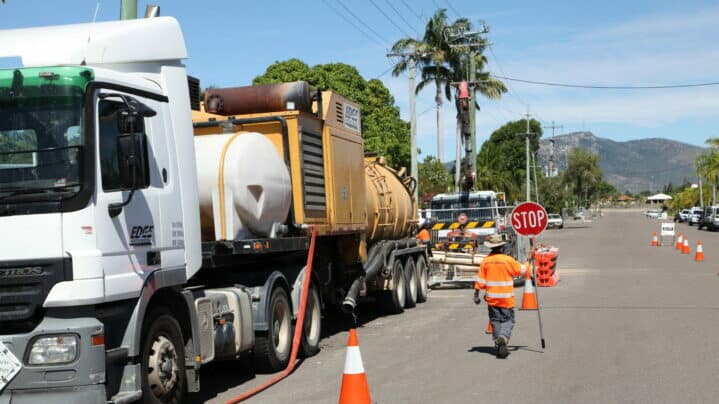Pipeline installations have the potential to cause significant damage to existing infrastructure and utilities because the very act of excavation creates the risk of the ground moving in the vicinity of the installation taking place.
Minimising the impact on existing infrastructure
This is a problem particularly associated with tunnelling in urban environments where there may be multiple buildings in close proximity and limited construction space. The deeper the excavation, the higher the risk that the ground will move because the ground pressures become out of balance, resulting in both the movement of the ground and the infrastructure on top or underneath it.
Compared to other trenchless methods, the AXIS laser guided boring system is able to perform keyhole pipeline installations, which greatly reduces the risk of ground movement.
Keyhole installations enable a pipe to be installed through one small incision, rather than having to dig up the whole area. As only entry and exit pits need to be excavated, andby only coring out the minimum amount of ground where the pipe needs to go, the surrounding ground can be left in harmony and there is minimal impact on existing infrastructure.
In contrast to most microtunnelling machines on the market that can only move in a forward direction, the AXIS also has the ability to perform a pilot line through the ground and retract if any issues are encountered, allowing contractors to inspect the ground, and do any ground treating if required.
Pilot lines have traditionally been installed via a displacement method. For this method to be successful, the ground being tunnelled through must be displaced, however, this method is often not able to be used due to changing ground conditions.
Unlike traditional methods, the XIS system extracts the ground being tunnelled through rather than displacing it. It is designed to cut and extract the ground as it proceeds, meaning it has little to no influence on the ground directly surrounding the installation.
Reducing ground disturbance and the potential for sinkholes
Microtunnelling also reduces the chances of sinkholes forming in the future, which are another cause of structural damage. A lot of sinkholes are the result of a pipeline being installed – possibly incorrectly – and the ground being disturbed around it. The pipe acts like a venturi and syphons the ground out from underneath it – when this happens, the slightest bit of pressure can cause the ground to collapse.
This is a common occurrence around water pipes which have been leaking. As the water finds its way in, the ground moves in with it, creating a void. As microtunnelling doesn’t require the ground to be filled back in around the pipe after installation, this shouldn’t become a problem.
Another advantage of microtunnelling is that it often requires a jacking pipe, which is less likely to have the joint issues that open cast pipes have. Open cast pipes are laid following excavation, which involves making a new bed and pulling all the material around the pipe to prevent it from moving.
The surface must then be rebuilt by layering and compacting the earth; this constant interference results in a settling period as the ground adjusts to the changes created by the installation. During that settlement period, movement will occur and everything within the installation area has the potential to become structurally less sound than before.
When a pipe is cored through the ground like during pipe jacking, the ground guides the pipe but remains unaltered, sitting snugly around the pipe while staying in the position it’s always been in.
Maintaining ground stability using microtunnelling
When it comes to installing pipelines, especially in urban settings, maintaining the stability of the existing infrastructure is a major consideration. Microtunnelling is a trenchless solution that reduces the impact on the ground surrounding the installation, making it ideal for use in installations close to buildings and critical underground services.

